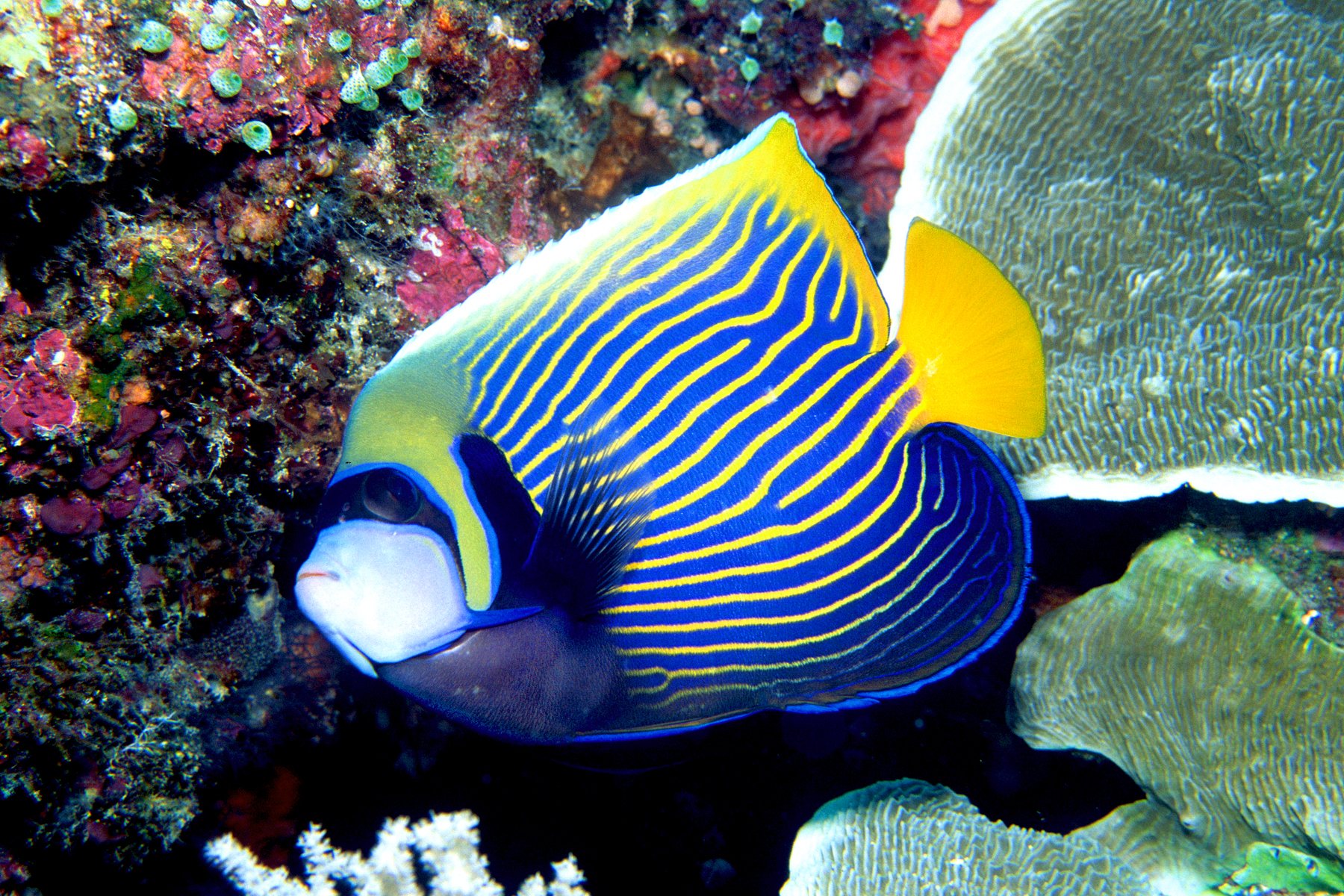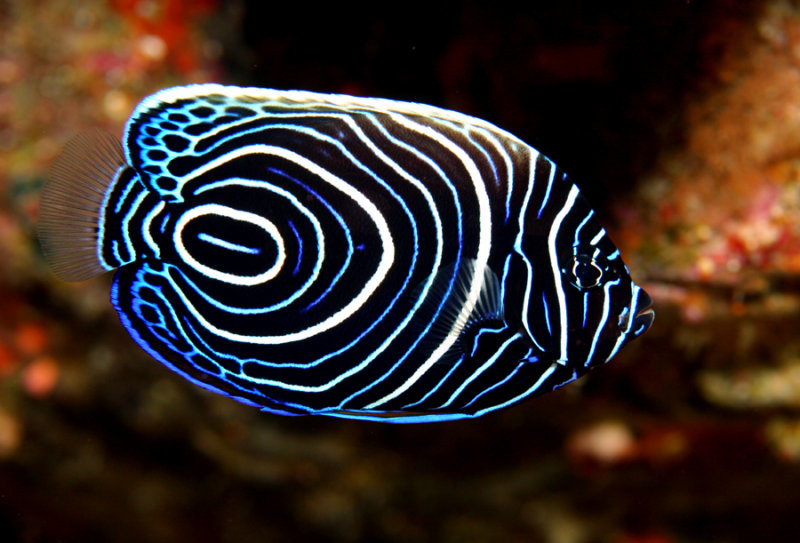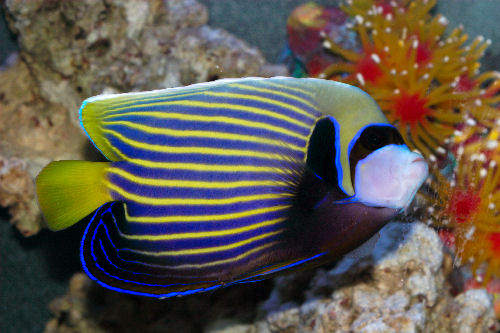
Pomacanthus imperator
FAMILY
Pomacanthidae
TAXONOMY
Pomacanthus imperator Bloch, 1787, Japan.
OTHER COMMON NAMES
Afrikaans: Keiser-engelvis; French (Polynesia): Poisson empereur;
paraharaha; Japanese: Tatejima-kinchakudai.
PHYSICAL CHARACTERISTICS
Deeply compressed, with longish pelvic fins and a long preopercule
spine. Adults and juveniles have distinct color phases.
Adults are yellow with horizontal blue stripes along the flank, a
deep purplish mask over the eye and on the flank above the
pectoral fin, a white snout and mouth, and yellow fins with
purplish blue stripes on the anal fin. Juveniles are deep navy
blue to almost black, with concentric white circles on the flank
and white bands on the head. One of the largest angelfishes, to
over 15.7 in (40 cm) total length.
DISTRIBUTION
Red Sea east to the Line Islands and the Tuamotu Archipelago;
southern Japan south to northern Australia, and southeast
to Lord Howe Island and the Austral Islands. Reported from
Hawaii, but either very rare as a stray or introduced from
aquarium stock.
HABITAT
Coral reefs. Juveniles on patch reefs in lagoons, protected areas
in lagoon passes, and among corals, in holes or under ledges
on outer reefs or reef flats; subadults move to surge channels
and holes on reef fronts; and adults are found usually near
caves and ledges of seaward reefs, passes, or lagoons.
BEHAVIOR
Usually observed paired or singly as they patrol a large home
range; may display some intra- or interspecific territorial
BEHAVIOR
(usually towards other similarly sized angelfishes). Have
an haremic mating group, with subordinate females residing
within the male’s home range.
FEEDING ECOLOGY AND DIET
Feed almost exclusively on sponges and tunicates.
REPRODUCTIVE BIOLOGY
Protogynous hermaphrodites. Sequential courtship and spawning
among members of a mating group occur at dusk. Eggs
and larvae are pelagic. Eggs are round, approximately
0.023–0.039 in (0.6–1 mm) in diameter. Larvae hatch around
0.05–0.1 in (1.3–2.6 mm) in length, have a large yolk sac, an
unformed mouth, and unpigmented eyes. With growth, they
assume a deep, laterally compressed shape, and the profile of
the head becomes steep. Possesses a gas bladder. The development
of head spination and spinules (spine-like structures on
the skin) are specializations for pelagic life.
CONSERVATION STATUS
Not listed by the IUCN. Because of apparent low population
densities at many localities, this species is subject to overfishing
by the aquarium trade.
SIGNIFICANCE TO HUMANS
Highly prized, especially the juveniles, as an aquarium fish.
Adults are also taken occasionally in subsistence food fisheries.
Photo Gallery of - Emperor angelfish





 Animalia Life
Animalia Life